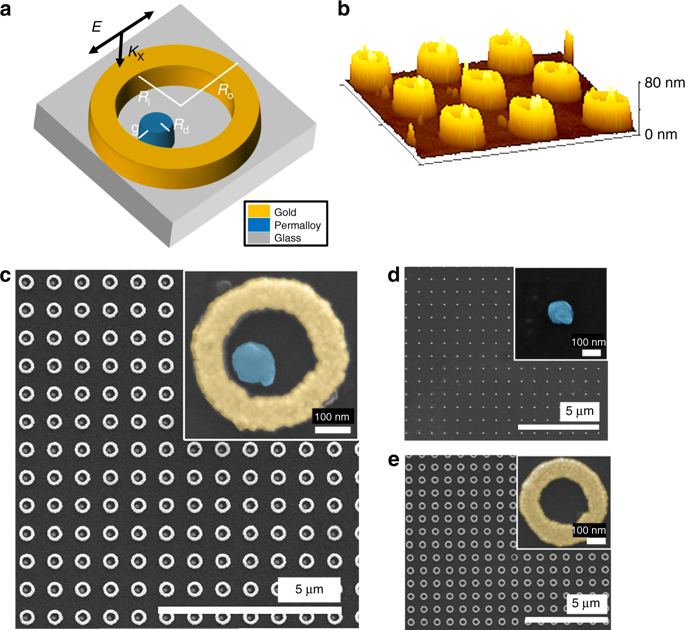Light: Science & Applications ( IF 20.6 ) Pub Date : 2020-03-30 , DOI: 10.1038/s41377-020-0285-0 Alberto López-Ortega 1 , Mario Zapata-Herrera 1 , Nicolò Maccaferri 2 , Matteo Pancaldi 3 , Mikel Garcia 1 , Andrey Chuvilin 1, 4 , Paolo Vavassori 1, 4

|
Enhancing magneto-optical effects is crucial for reducing the size of key photonic devices based on the non-reciprocal propagation of light and to enable active nanophotonics. Here, we disclose a currently unexplored approach that exploits hybridization with multipolar dark modes in specially designed magnetoplasmonic nanocavities to achieve a large enhancement of the magneto-optically induced modulation of light polarization. The broken geometrical symmetry of the design enables coupling with free-space light and hybridization of the multipolar dark modes of a plasmonic ring nanoresonator with the dipolar localized plasmon resonance of the ferromagnetic disk placed inside the ring. This hybridization results in a low-radiant multipolar Fano resonance that drives a strongly enhanced magneto-optically induced localized plasmon. The large amplification of the magneto-optical response of the nanocavity is the result of the large magneto-optically induced change in light polarization produced by the strongly enhanced radiant magneto-optical dipole, which is achieved by avoiding the simultaneous enhancement of re-emitted light with incident polarization by the multipolar Fano resonance. The partial compensation of the magneto-optically induced polarization change caused by the large re-emission of light with the original polarization is a critical limitation of the magnetoplasmonic designs explored thus far and that is overcome by the approach proposed here.
中文翻译:

利用与磁等离子体纳米腔中的多极暗等离子体激元杂交来增强光极化的磁调制。
增强磁光效应对于减小基于光的非往复传播的关键光子器件的尺寸以及实现有源纳米光子学至关重要。在这里,我们公开了一种目前尚未探索的方法,该方法在特殊设计的磁等离子体纳米腔中利用与多极暗模式的杂交来大大增强磁光诱导的光偏振调制。设计的几何对称性被破坏,可以与自由空间光耦合,并可以将等离激元环纳米谐振器的多极暗模式与置于环内的铁磁盘的偶极局域等离振子谐振进行杂交。这种杂交导致低辐射的多极Fano共振,该共振驱动了强烈增强的磁光感应局部等离激元。纳米腔的磁光响应之所以大幅度放大,是由于强烈增强的辐射磁光偶极子所产生的光偏振的大磁光感应变化的结果,这是通过避免同时增强再发射光来实现的通过多极Fano共振实现入射极化。由光的大量再发射引起的磁光感应偏振变化的部分补偿是原始偏振,这是迄今为止探索的磁等离子体设计的一个关键限制,并且可以通过此处提出的方法来克服。这是通过避免通过多极Fano共振同时增强入射光束的再发射光来实现的。由光的大量再发射引起的磁光感应偏振变化的部分补偿是原始偏振,这是迄今为止探索的磁等离子体设计的一个关键限制,并且可以通过此处提出的方法来克服。这是通过避免通过多极Fano共振同时增强入射光束的再发射光来实现的。由光的大量再发射导致的光磁感应偏振变化的部分补偿是原始偏振,这是迄今为止探索的磁等离子体设计的关键限制,在此提出的方法可以克服这一局限。











































 京公网安备 11010802027423号
京公网安备 11010802027423号